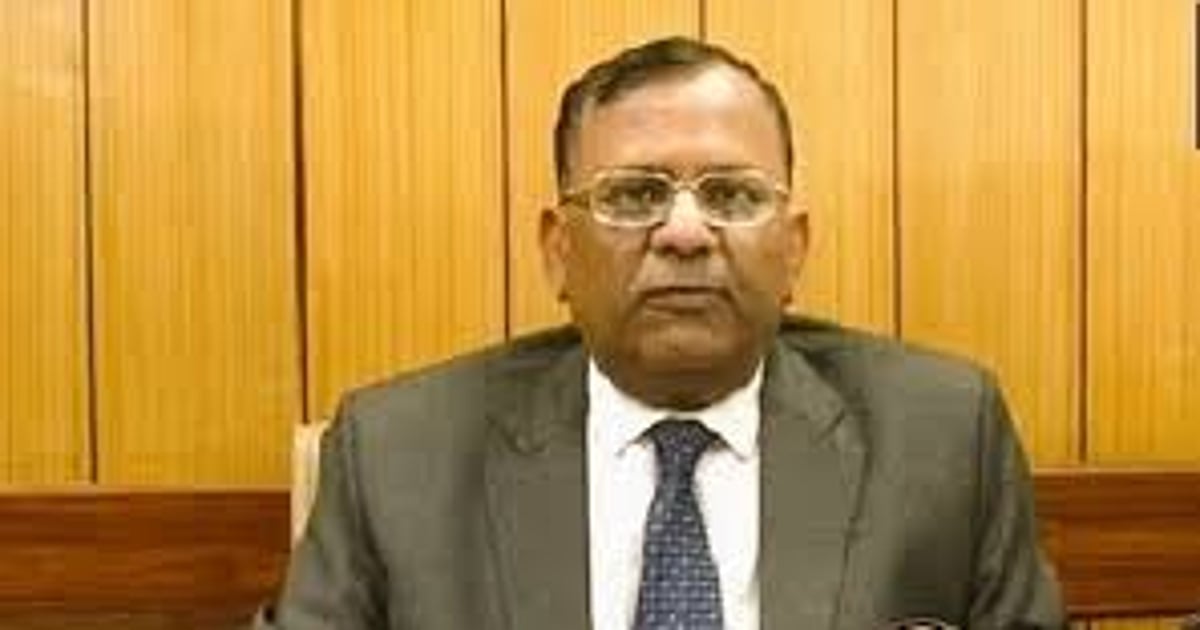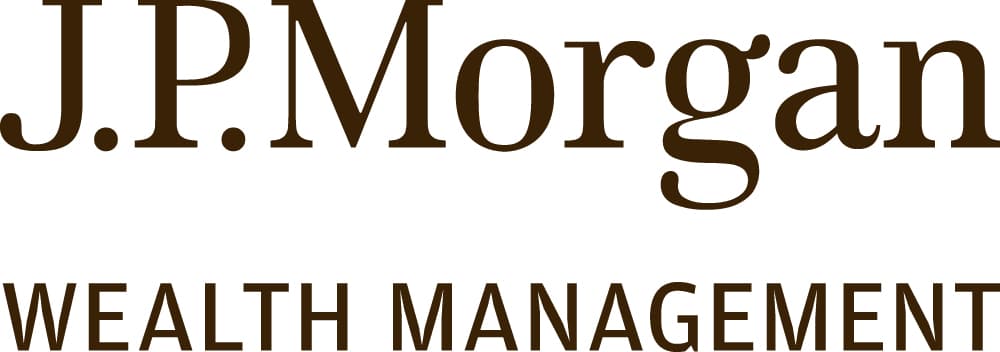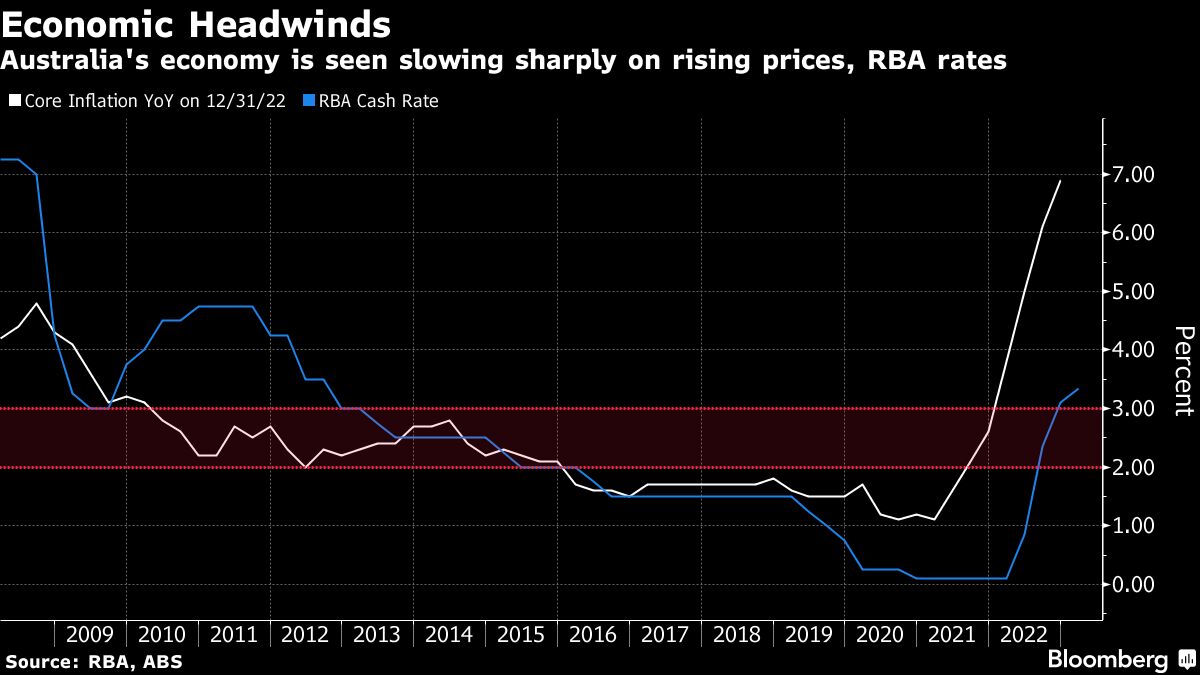(Bloomberg) — Federal Reserve officials face their biggest challenge in months as they weigh whether to keep raising interest rates this week to cool inflation, or take a pause amid the market turmoil fueled by recent bank failures.
Most Read from Bloomberg
Before the collapse of Silicon Valley Bank and the resulting fallout, Fed policy makers were poised to raise rates by as much as 50 basis points after a string of data suggested the economy was much stronger than officials thought at the beginning of the year.
Now, given the financial market volatility, many Fed watchers expect a smaller, quarter-point increase, and some say the US central bank will pause altogether after a two-day meeting that starts on Tuesday.
The decision follows a 50-basis-point rate hike from the European Central Bank on Thursday. President Christine Lagarde said the ECB remains committed to fighting inflation, while monitoring bank tensions closely.
Also highly anticipated from the Fed meeting with be an update to the Summary of Economic Projections — a quarterly report laying out participants’ forecasts for everything from inflation to interest rates — and Chair Jerome Powell’s post-meeting press conference.
Amid the banking sector turmoil, Powell will likely face questions around the central bank’s supervision of SVB and other struggling entities.
He’ll also need to tread carefully when talking about the likely future path of interest rates. Before the banking issues emerged, Fed officials had indicated that rates would need to move above 5% this year and remain there until inflation was on pace to fall back to their 2% target.
Yet heightened uncertainty over to what extent bank capitalization issues — exacerbated by the Fed’s rapid interest rate increases and the impact on Treasury yields — will impact the broader economy may limit Powell’s ability to tighten much more going forward.
What Bloomberg Economics Says…
“The FOMC faces its most challenging policy decision in recent memory on March 22. Market expectations have shifted sharply — from a 50-basis-point hike to a pause — as fears of bank contagion displace inflation concerns. We expect the Fed to hike 25 basis points, taking the upper bound from 4.75% to 5%. Reaccelerating inflation maintains pressure to keep hiking.”
— Anna Wong, chief US economist. For full analysis, click here
Elsewhere, 12 other central banks set policy in the coming week. Economists predict rate hikes in the UK, Switzerland, Norway, Nigeria and the Philippines, while Brazil and Turkey will probably hold. Meanwhile, traders betting on the Bank of Canada’s rate path will get a fresh inflation reading.
Click here for what happened last week and below is our wrap of what’s coming up in the global economy.
Asia
On Monday, the People’s Bank of China will likely report that banks left their loan prime rates unchanged as the economy gradually recovers.
In Tokyo, a summary of opinions from the Bank of Japan’s meeting earlier this month will shed more light on the rationale for keeping monetary policy steady ahead of Kazuo Ueda’s arrival at the helm in April.
Reserve Bank of Australia official Chris Kent on Monday may offer an up-to-date take on the policy stance and any concerns over financial market contagion. Those remarks will likely prove more timely than minutes due Tuesday from the RBA’s March meeting.
Early trade numbers from South Korea will offer a pulse check on global conditions.
Japan’s inflation figures on Friday are set to mirror earlier data that pointed to a cooling of prices, helped largely by newly subsidized electricity bills.
Hong Kong and Taiwan central banks will announce their interest rates on Thursday.
Europe, Middle East, Africa
The Fed may be the dominant central-bank decision this week, but several others will also draw investors’ attention.
The Bank of England takes center stage in Europe. Officials await the latest UK inflation reading on Wednesday, possibly showing price growth is still close to double digits. Most economists predict rates will be raised by a quarter-point the next day, though with financial tensions still simmering, a minority sees no change.
Here’s a quick rundown of the other decisions due:
-
The Swiss National Bank meeting on Thursday is a quarterly one and there’s catch-up to do, so a hike of as much as 50 basis points is widely anticipated. Overshadowing the outcome is Credit Suisse Group AG, the stricken bank offered a lifeline to help contain global turmoil.
-
The same day in Norway, where officials are forecast to raise rates by another quarter point to extend the monetary tightening cycle in the oil-rich economy.
-
An Icelandic decision is due on Wednesday, with another big rate hike possible.
Looking south, central banks will be very active too. Here’s a quick summary:
-
Nigeria may raise rates on Tuesday to contain inflation that’s near an 18-year high, and to encourage investment.
-
In Angola the same day, officials may cut benchmark borrowing costs for a second time this year as the kwanza remains stable, commodity prices are seen moderating, and a downward swing in price growth looks likely to continue.
-
In Morocco that day, the central bank will most likely pause monetary tightening as food prices start to ease.
-
And in Turkey on Thursday, officials are expected to hold rates steady. Any signs of future policy will be key as the country heads toward elections in May, where President Recep Tayyip Erdogan faces the strongest challenge yet to his two decades in power.
After the ECB’s meeting on Thursday, which ended with a half-pint hike but no future guidance, more than a dozen of its policy makers will speak in the coming days. President Lagarde is likely to draw the most attention with testimony to the European Parliament on Monday.
Further clues on the backdrop for the banking system may be available when her ECB colleague Andrea Enria, the euro region’s top regulator, talks to the same panel of lawmakers the following day.
Lagarde is also among officials who’ll take the stage at the ECB and Its Watchers conference in Frankfurt on Wednesday, and several others are scheduled to make appearances elsewhere during the week.
Meanwhile, purchasing managers’ indexes in the euro zone and UK will give an indication of the strength of industry as China reopens, and the German Council of Economic Experts will publish an updated growth outlook.
Latin America
A busy week in Brazil begins with the central bank’s survey of market expectations on inflation, which continue to edge further above target through 2025.
Banco Central do Brasil is all but certain to hold its key rate at 13.75% for a fifth straight meeting, though policy makers may strike a dovish tone in the post-decision statement.
After minimal disinflation over the past three mid-month consumer price readings, analysts see steeper deceleration for the mid-February print and into the second quarter due to base-effects, before a second-half uptick.
Chile’s fourth-quarter output report may show that the Andean country narrowly avoided falling into a technical recession, due in part to untapped household liquidity and the impact of China’s reopening.
In Argentina, four straight negative readings on its monthly economic activity indicator point to a quarterly contraction in output heading into a challenging 2023.
In Mexico, the weakness seen in retail sales since May likely extended into January, while slumping demand from the US, the country’s biggest export market, can be expected to weigh on January GDP-proxy data.
The early consensus has mid-month inflation coming in near a one-year low — though still more than twice the 3% target — while the somewhat more sticky core reading extends a drop from November’s two-decade high of 8.66%, in line with Banxico forecasts.
–With assistance from Robert Jameson, Malcolm Scott, Sylvia Westall and Stephen Wicary.
Most Read from Bloomberg Businessweek
©2023 Bloomberg L.P.





































